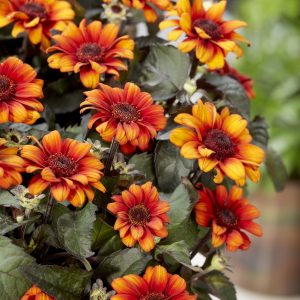Heliopsis, commonly known as False Sunflower, is a wonderful perennial that adds bright and cheerful blooms to your garden. Follow this comprehensive planting guide to ensure successful establishment and a season full of vibrant flowers.
Site Selection
Sunlight Requirements: Choose a location that receives full sunlight for at least 6 to 8 hours a day. Heliopsis thrives in bright, sunny conditions.
Soil Quality: Plant in well-draining soil with a slightly acidic to neutral pH. Heliopsis is adaptable to various soil types but prefers loamy soil.
Planting Time
Spring or Autumn: Plant Heliopsis in the spring or autumn when the soil is workable. Avoid planting during the hottest part of summer or extreme cold conditions.
Planting Process
Spacing: Space Heliopsis plants about 18 to 24 inches apart. This provides ample room for growth and good air circulation.
Container Planting: If planting in containers, use a high-quality potting mix with good drainage. Ensure containers have drainage holes.
Planting Depth: Plant Heliopsis at the same depth as they were in the nursery container. Water thoroughly after planting.
Watering
Establishment Period: Water regularly during the first few weeks after planting to help the plants establish. Once established, Heliopsis is drought-tolerant.
Deep Watering: Water deeply when the top inch of soil feels dry. Water at the base of the plant to keep foliage dry and reduce the risk of diseases.
Mulching
Mulch Application: Apply a layer of organic mulch around the base of Heliopsis plants. Mulch helps retain soil moisture, suppress weeds, and regulate soil temperature.
Fertilisation
Moderate Feeding: Heliopsis doesn’t require heavy feeding. Apply a balanced, slow-release fertiliser in the spring as new growth appears.
Pruning
Deadheading: Deadhead spent flowers regularly to encourage prolonged blooming. Cut back the entire plant lightly after the first flush of flowers to maintain a compact shape.
Support
Generally Not Required: Heliopsis plants are generally sturdy and may not require staking. However, tall varieties might benefit from support if grown in windy conditions.
Pest and Disease Management
Pest Monitoring: Keep an eye out for pests like aphids or spider mites. Treat promptly if detected.
Good Air Circulation: Ensure good air circulation around plants to reduce the risk of fungal diseases.
Winter Care:
Minimal Care: Heliopsis is hardy and generally requires minimal winter care. Mulch around the base for added protection in colder climates.
Enjoy the Blooms
Blooming Season: Revel in the profusion of bright, daisy-like blooms that Heliopsis produces, typically from midsummer to autumn.
By following this planting guide, you’ll create an optimal environment for your Heliopsis plants to thrive. Customise care based on your local conditions and the specific variety you’ve chosen.






